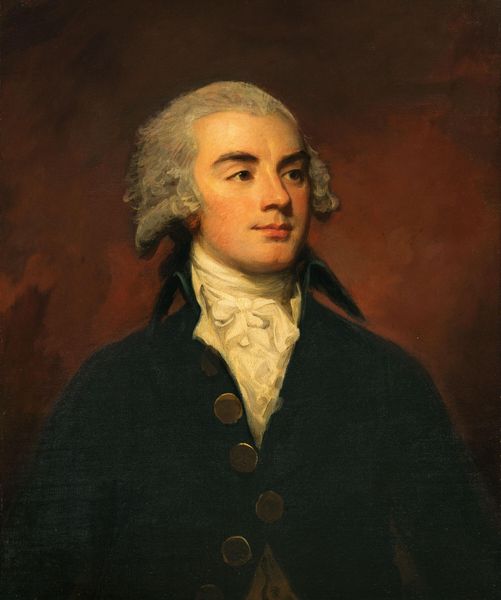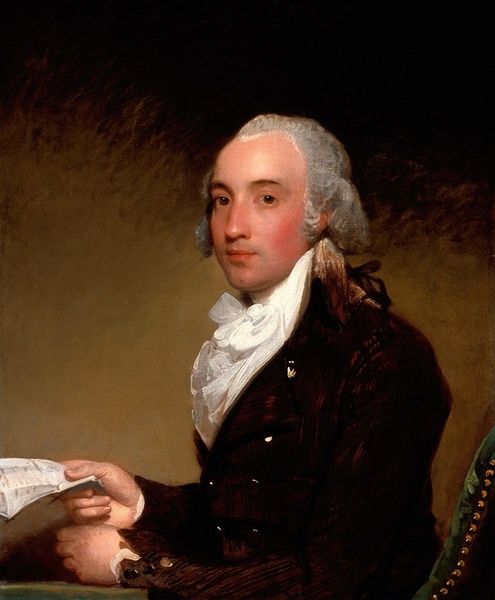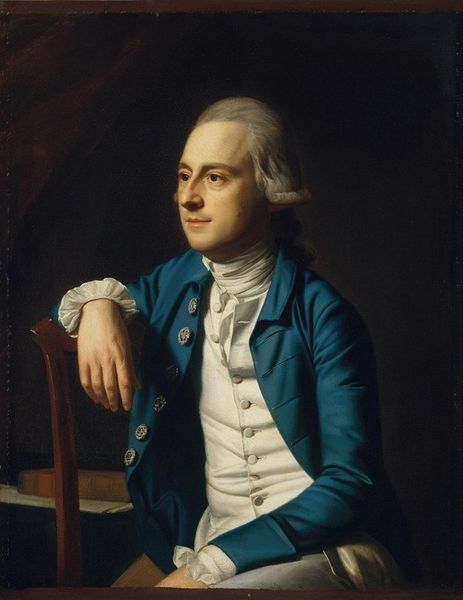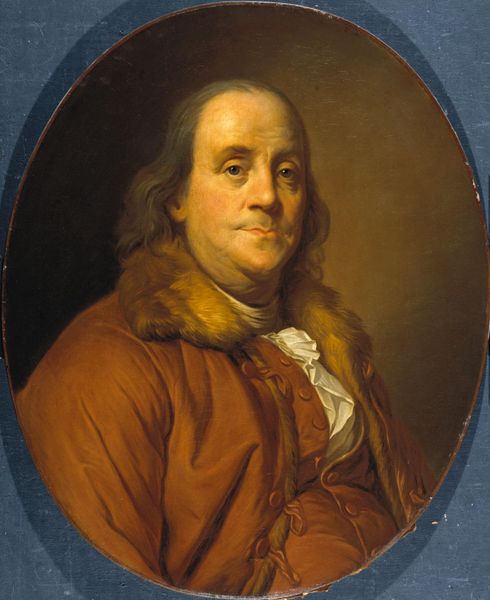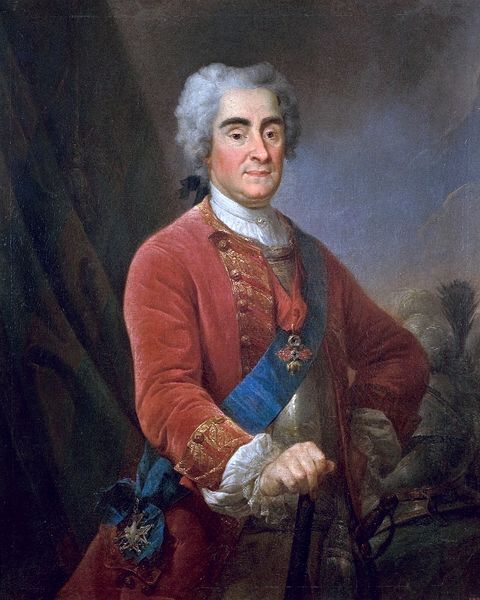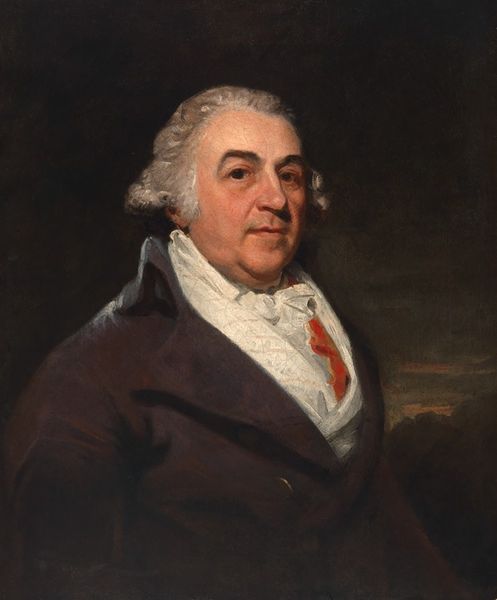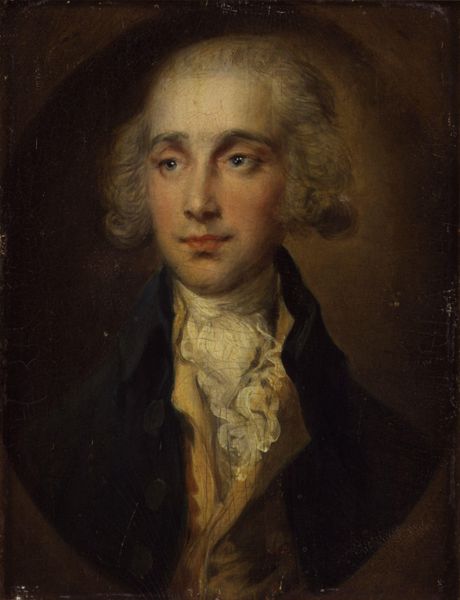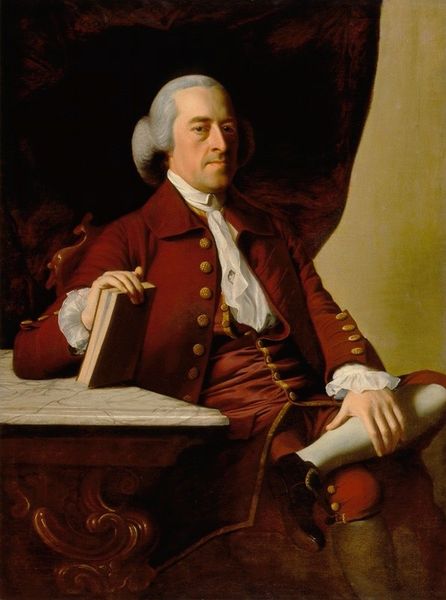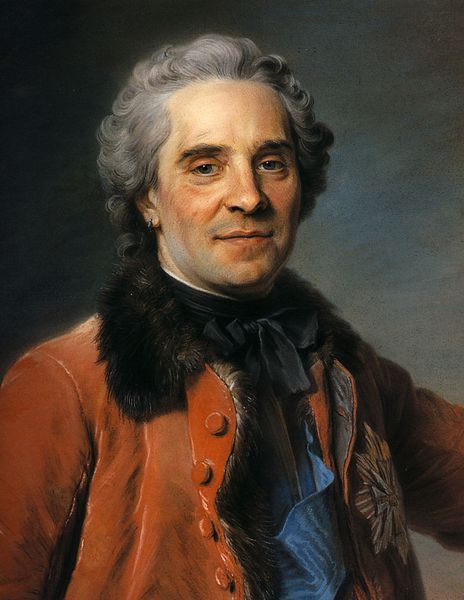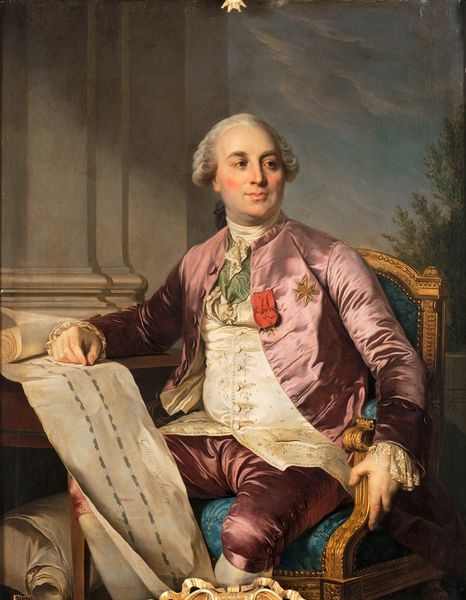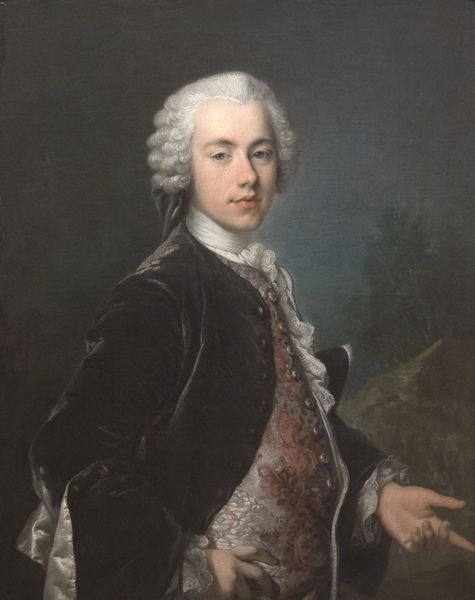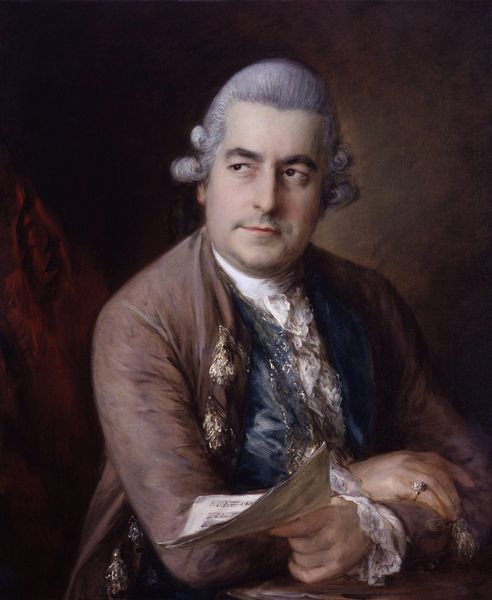
painting, oil-paint
#
portrait
#
neoclacissism
#
painting
#
oil-paint
#
academic-art
#
realism
Copyright: Public domain
Editor: So here we have Vladimir Borovikovsky’s "Portrait of Torsukov Ardalyon," painted in 1795, with oil paint. He's giving us a look, and that red sash just *pops* against the muted background. I'm curious—what's your take on this piece? Curator: Well, imagine stepping back into late 18th-century Russia. Borovikovsky, primarily known as a portraitist, beautifully encapsulates that era's blend of Neoclassical ideals and burgeoning Romantic sensibilities, right? You see that poised, almost theatrical, stance? The very essence of an aristocratic representation. What strikes *me* is that quiet hint of something deeper— almost like there’s a silent story yearning to be told through his eyes. He definitely carries himself well, don't you think? Editor: Absolutely! But what's the significance of the red sash? Is it just a fashion statement, or is there a deeper symbolic meaning? Curator: Aha! Excellent question. The red sash could signify any number of things. Power, position, certainly wealth and the capacity to own or commission expensive objects like sashes and portraits of this style. What do *you* think about the hand placement and facial expression—does it indicate some level of emotional expression or reserved stoicism? Editor: Good point. Maybe it's a calculated look, designed to project an image of status. Curator: Precisely! Each detail serves a purpose in conveying not just likeness but also status, and desired qualities in the subject. It’s about creating an *impression* isn't it? Editor: I see what you mean. It’s like he’s curating his own image for posterity. Curator: Exactly! I appreciate that kind of sensitivity to composition. And by reflecting on the composition like we are now, our dialogue has added a modern layer to how people can experience the work.
Comments
No comments
Be the first to comment and join the conversation on the ultimate creative platform.
